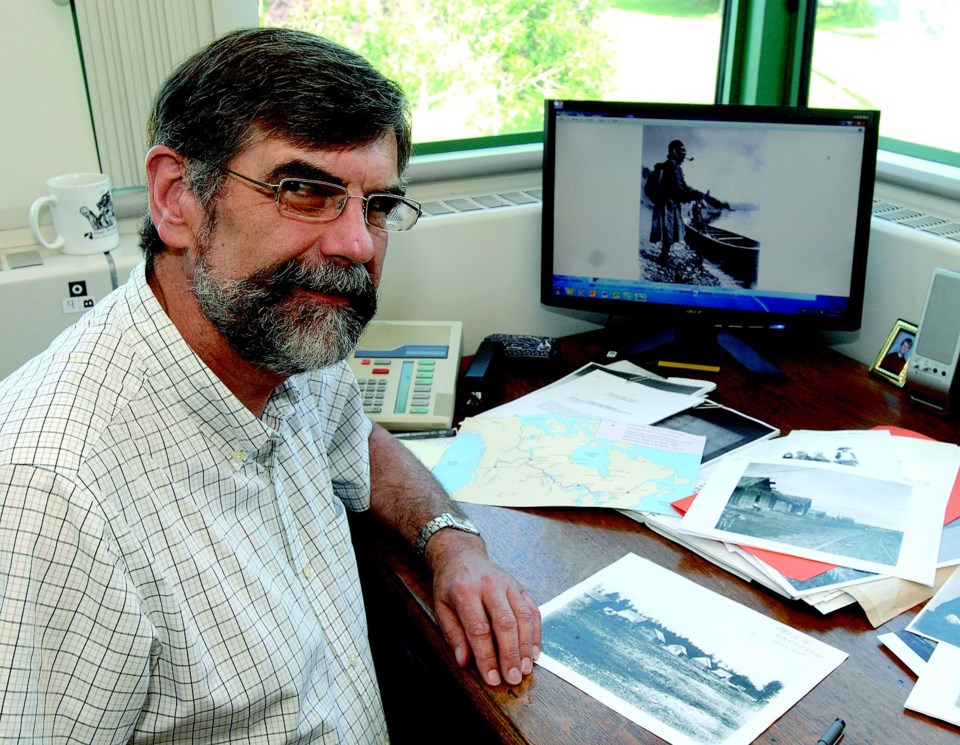Along with the Prince George Public Library, the Exploration Place has also done extensive work to preserve the city's history in a digital format and make it accessible to everyone online.
The museum maintains permanent online exhibits crammed with images of the city and region's past at the Exploration Place website at www.theexplorationplace.com. Click on "collections" on the top menu bar to access the sites.
They are a virtual treasure trove for history buffs, with a growing collection of photographic images, documents and maps.
For example, there are photos of Prime Minister John Diefenbaker's visits to Prince George in 1962 and 1965 in the Wally West Collection, one of eight themed online exhibits on the website. There's also Opening New Caledonia, Settlers' Effects, Milltown to Downtown, Children When Prince George was Young, The Electronic Forest (a slideshow that explores modern forest practices), Fossils of Northern B.C. (which links to Canada's digital fossil collection), and the Jacob Simonson Collection.
Settlers' Effects contains pages of photographs that depict life in the earliest days of Prince George, McBride, Valemount and Mackenzie, and the impact people had in shaping social, cultural and environmental changes. The photos date from the establishment of Fort George in 1807, and include the arrival of the Pacific Great Eastern Railway in 1952.
Opening New Caledonia: Building the Economic Engine (1880-1976) documents the development of north central B.C.'s natural resource industries and transportation routes and how that attracted people to the region. The database contains 750 maps that show area forests and chart the growth in the city boundaries, much of which occurred in the boom years of the late 1960s and early 1970s.
Journal entries and correspondence from Luther Collins (L.C.) Gunn, a survey engineer for the Grand Trunk Pacific Railway and the Pacific Great Eastern Railway, are included in a collection that describes working conditions during the building of the railways from 1901 to 1912.
The Blake Dickens Forestry Collection has 3,400 photos taken by Dickens, a College of New Caledonia forestry professor, who used the picture to instruct his students. Also contained are Northwood Pulp and Timber forestry maps used by its five sawmills to maintain the supply woodchips for its Prince George mill, including cutting permits, logging plans, cruise boundaries, and road engineering documents.
Milltown to Downtown (1947-1972) has 2,000 photographs taken in the boom years of the city, from 1947-1972, when the population swelled from 4,000 to 35,000. Half of the images were taken by Citizen photographers and half are from the shutters of Wally West. West was the school photographer and many of his class photos are in the Mind and Spirit subsection.
Construction of the city's three pulp mills -- Intercontinental, Prince George and Northwood -- are part of the Building A City subsection; fads and fashions are part of the Lure of the New subsection; and lifestyles, entertainment and sports are in the Good Time in Prince George file, including a section on the Queen Aurora beauty contest.
"There are some hilarious photos of people trying to do their first fashion photography," Campbell said. "There are things you can find in here like Johnny Cash coming to Prince George and pictures of pipe bands."
Simonson's photography, part of the Wally West collection the museum obtained in 1993, is a series of 230 images and 120 glass plate negatives shot from 1910-1925. He had a studio in South Fort George on what is now known as Hazelton Avenue and recorded some of the most significant events in the city's early history, such as the arrival on the Fraser River of the first sternwheeler, the first stage coach (in 1911), and the first fall fair (in 1912), which became the Prince George Exhibition.
The Wally West collection of 56,000 images extensively documents Prince George life over 58 years, including many of his aerial photos of the city. West arrived in in October 1946 from Edmonton and set up his studio in a condemned dance hall with no heat or plumbing. He was allowed to use the CKPG radio station studio for his portraits while renovations were made to his second-floor property.
Most of the images can be downloaded as low resolution JPEG files or PDF documents.
The entire museum database can be searched with software that has a built-in feature that inserts wild card words at the beginning and end of search words to help people unsure of spellings, to allow for alternate spellings, plurals, or if only part of a term is known.
"It could be a paddlewheel boat, or a sternwheeler, or a steamer, or a riverboat, all describing the same thing, so you might have to try a few things," said Campbell.
Once an item has been located, the library requires only its catalog number if people require a higher resolution copy, available for a small fee.
The museum welcomes the loan of historical photos for scanning, which will then be returned to their owners.


